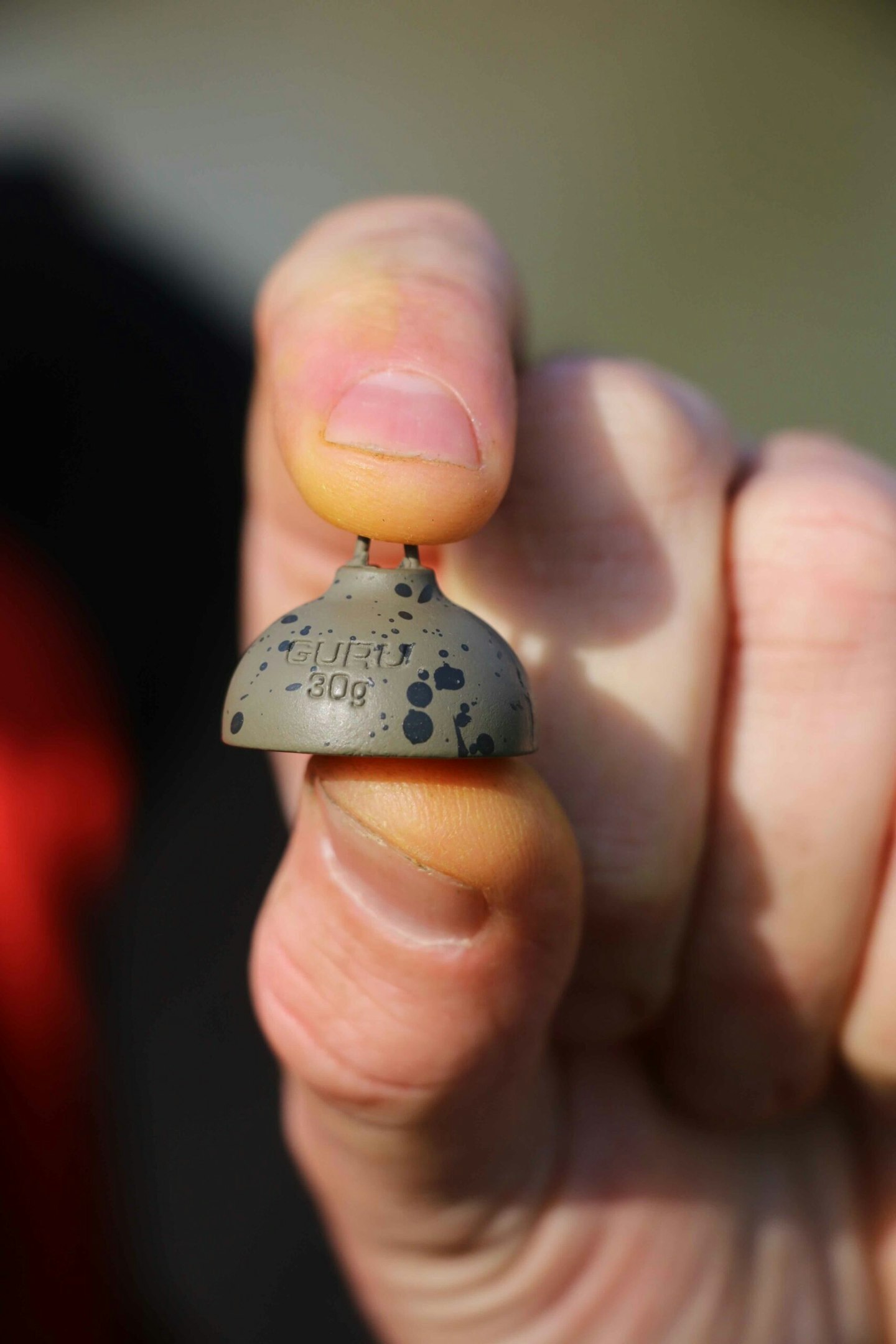If catching f1s is your primary aim the ‘over-shotted rig’ is a tactic that you simply have to try. Responsible for numerous big match wins, the ‘tap, tap, boom’ approach, as it has become known, definitely divides opinion.
Detractors claim that very little skill is required to catch fish with it, while fans are adamant that criticism is way off the mark.
WANT TO CATCH SOME BIG F1'S? OUR WHERE TO FISH GUIDE HAS YOU COVERED.

Plumbing up
A lot of anglers that fish shallow aren’t interested in the depth of their swim, but I believe it’s very important, especially when fishing tight to cover.
If you have 2ft to 2ft 6ins, the fish are hard to get up off the bottom as they feel a little cagey in the shallow water. But 3ft seems to give them the confidence to come off the deck, and this is the perfect depth, in my opinion.
I will fish in deeper water, too, but that means there is more scope for the F1s to hide in the layers, meaning more rigs could be needed and it might take longer to relocate the shoal if the bites start to dry up.
MAKE SURE YOU'RE SAT ON ONE OF THE BEST FISHING SEATBOXES BY LOOKING THROUGH OUR BUYER'S GUIDE.

Perfect your technique
There is this growing misconception that fishing the over-shotted rig is just about tapping the water until a fish hits the hookbait, feels the resistance of the pole tip and hooks itself. That’s not true, and if you don’t concentrate on the technique when it comes to manipulating the rig, you’ll miss out on a lot of fish.
I have two techniques, and the first involves submerging the pole-tip and then flicking the rig up and down quite quickly, stopping for brief spells when I feed over the top.
The other sees me flick the rig up and lower it down slowly to the maximum depth to reduce the pace at which the hookbait is moving.
Both work, and you’ll often need to rotate between the two during a session. If bites dry up, switch your technique for a while, and that could spark the next run of action.
USING ONE OF THE BEST FISHING POLES WILL HELP YOU PRESENT YOUR RIG PERFECTLY.

Maintain tension
The over-shotted rig works because the whole rig is always under constant tension. Once a fish intercepts the hookbait, the hook is set in a split-second.
I start with my elastic, and connect the 12-14 Matrix Slik to my rig via a small crow’s foot. This is much more direct than a Dacron connector, in my view. The length of line between pole tip and float is 1ins-2ins, where permitted, or the shortest allowed by venue rules.
The float, a 0.1g RW No1 Dibber, sinks slowly with four No10 shot on the mainline. My bulk of shot, just above the hooklength knot, is on 0.18mm mainline above a 0.14mm hooklength and a size 16 hook. The 5ins hooklength is quite long, but I believe this allows me to flick the hookbait up in line with the bulk, giving it a slightly longer fall than a 3ins or 4ins version would.

Rotate your rigs
F1s can be incredibly stubborn, and will refuse to budge from the depth that they want to sit at. It sounds ridiculous, but if the fish are sat at 16ins and your hookbait is 18ins below the surface, they’ll often refuse to move a fraction to take it!
To deal with this, I always have several over-shotted rigs set up. They’ll differ in 2ins increments, and I won’t change the depth of them, as the short gap between the pole tip and float is vital to maintain tension in the whole of the rig.
F1s are constantly changing the depth that they sit at and, at this time of the year, they could be anywhere between 10ins and 20ins deep, meaning six over-shotted rigs will be set up to deal with every 2ins of depth.
If you aren’t catching, it’s time to pick up the next, slightly deeper rig, but if you are foul-hooking or hooking fish around the mouth as opposed to in the top lip, go slightly shallower.
Don’t allow yourself to go a long time without putting a fish in the net. Three or four minutes of inaction should be enough to make me change the rig, and therefore the depth.
CHECK OUT THE BEST SEATBOX ACCESSORIES FOR INGENIOUS WAYS TO STORE YOUR TOPKITS.

Use casters
Casters are the only bait that I use when fishing shallow for F1s. They sink slowly, to help keep the fish high in the water column, and result in a better stamp of fish than maggots do.
It’s so important to keep the bait going in, and so I’ll feed three quarters of a pouchful every 30 seconds to a minute.
That can lead to you going through six to eight pints of bait in a match, but if you are concentrating on shallow fishing, you won’t need anything else.
If you are pleasure fishing, pick a swim with plenty of space away from other anglers and you’ll be able to feed half that volume and hold the shoal’s attention, as nobody else will be trying to drag the fish away from you.
A banded caster is the best hookbait, as it keeps all the hook on show, further reducing the chances of the point not setting home properly.
The over-shotted rig is almost unbeatable in the right hands, but it is essential that you fish it properly to make it work the wonders it’s capable of.
MAINTAIN YOUR ACCURACY BY FEEDING WITH ONE OF THE BEST FISHING CATAPULTS.

